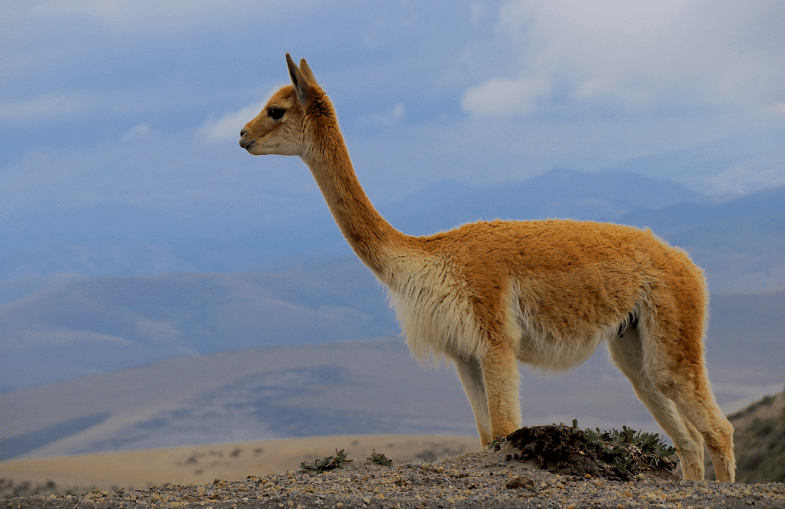To stand where the Cañari and Inca once stood

By Robert Bradley
Alpaca are shy. The rancher, even more so. In order to maintain a degree of privacy for my friend and host who invited me to participate in alpaca shearing, I am using a pseudonym for him.
I will call him Arthur Black.
Arthur Black arrived in Ecuador in 1980 to do research on his doctoral thesis while volunteering in the Peace Corps. He returned to the University of New Mexico, Albuquerque, in 1982 and stayed just long enough to complete his Ph.D. and fulfill his prior academic commitments. He was anxious to return to the high southern Andes, a land that suited him perfectly — a broad-strokes landscape of ever swaying páramo grassland protecting a biodiversity of life as varied as people, and often-times much more interesting.
In 1984 Arthur began raising alpaca on 4,400-acres of montane evergreen forest and páramo that he had purchased in the Nudo de Azuay, a mountain range in the southern tier of Sangay National Park.

The high páramo in Nudo de Azuay.
The ranch remains quite remote — for 20 of the last 34 years, it was accessible only by foot or horseback. In either case, the trip from trailhead to ranch house was a messy slog that took almost three hours crossing creeks and streams while climbing to a breathtaking 13,000 ft. For the last fourteen years or so, there has been what is laughingly called a “road” to the ranch, but it seems more suitable for use as an occasional creek bed, or amusement park ride — a “topsy-turvy”.
I arrived via the only vehicle suitable; a 4×4 pick up outfitted with a shovel, sand, an ax and the essential gear — block and tackle to pull you through the rough spots.
When we finally arrived at the ranch, I sighed a deep sigh of relief and then spent the better part of an hour wondering where my spleen was and how to put it back where it belonged.
As I looked across the valley, watching burly cloudbanks peering over the felt-covered landscape, I imagined this place to be identical to the nicest suburbs of Heaven.
I wrote this preamble to work my way into writing about wrestling feisty alpaca to the ground and shearing ’em with my Swiss Army knife and the occasional sharp stone, but I’m just not up to lying right now. I must be coming down with the flu, or somethin’. I’d sure like to get well soon so I can tell this story in the manner in which I am accustomed, but for now I will simply leave you with the truth. I sheared only one alpaca — and only part of one at that. Wisely, I left the real work to the experts.

Burly cloudbanks above the mountain páramo.
I kept busy in my own way, wrapped in fascination as I watched swarthy Cañari ranchands working like bees on a hive. There was an almost audible hum as their hands blurred in a fuzz of fiber, dust, and twigs, all the while keeping time to the grunts and cries of the critters as they were shorn, clipped and examined. It was great fun to watch.
Of equal reward was simply to be on the land.
Fifteen hundred years ago, 40,000 people lived in the high Nudo de Azuay, establishing some of the Cañari’s civilization’s most revered sacred sites. Unfortunately, it took the Inca invaders only years to dismantle them, destroying nearly every vestige of their culture to guarantee that the gods — Gods who the Cañari believed would guide them for eternity — would never return.
Today, only 500 people remain in the area.
The Incas ruled for less than 50 years before the conquistadors arrived, scattering them and their gods into hiding among crevassess and steep mountain enclaves. What remains is memories: worn terraces, broken pot shards, and a forever-wind blowing over a landscape that reads like sheet music on how to return home.
I am anxious to return to the ancient hallowed land. I want to stand again where the Cañari and Inca once stood, to see through their eyes the emerald waves of páramo grassland. I want to whistle the same song as the eternal wind, to re-read the sheet music terraces and note the ring of carillons made of stone and grass and strung with air. I want to be warmed by the campfire and eat sardines in rice and drink sweet, sweet coffee. I want to see alpaca grazing quietly in the mist and hear the resigned bleating of those being shorn. I want to feel the bracing morning cold and taste freshly drawn water, sheep cheese and fruit brought up from the lowlands. I want to remember every moment and every bird call. And, most of all, I want every blade of grass, shrub and stone that was ever abused to be returned to their rightful place, their heritage restored and made whole.
Now and forever more. Amen.





















